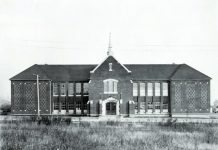With its breathtaking natural landscapes, characterized by lush, unending forests that have long defined the landscape, there’s no question as to why Washington is known as “The Evergreen State.” Among the myriad regions embodying this nickname, Lewis County home stands as an exceptional testament to Washington’s enduring legacy as the Evergreen State. Its sprawling evergreen forests not only exemplify the state’s natural grandeur but also serve as the cradle of an industry that has left an indelible mark on its history — that of Lewis County’s timber and logging industry.
Pioneering the Path: Early Settlers and the Timber Frontier
At the cusp of the late 19th Century, Lewis County was still a wild frontier, largely untouched by civilization. However, the arrival of intrepid settlers would mark the beginning of an era that would transform this pristine wilderness. Armed with grit and determination, these early pioneers set their sights on the vast timber resources that lay before them.
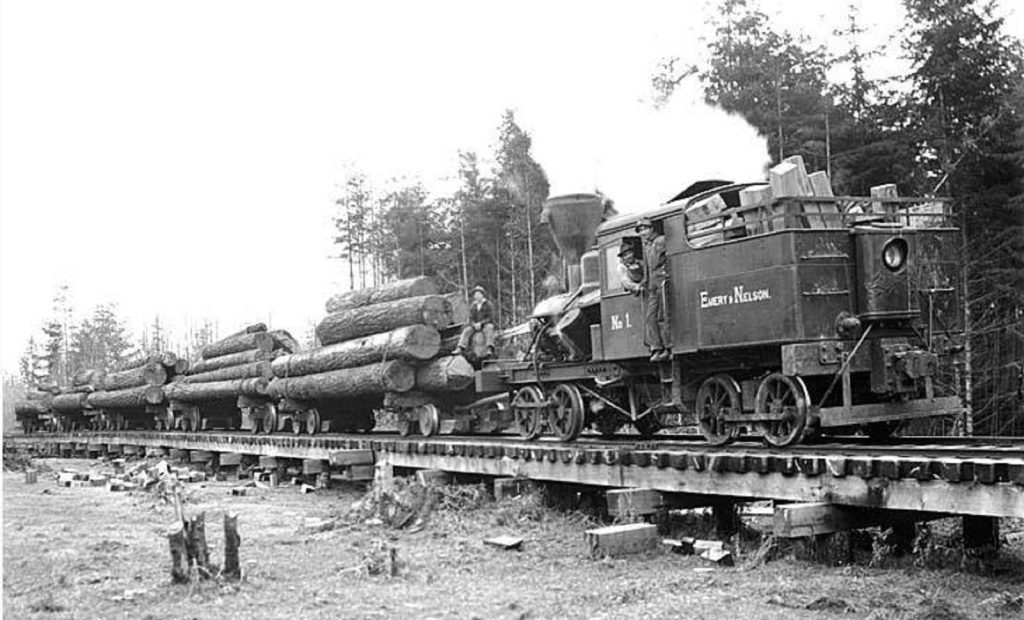
Initially, these early settlers had relied on crops and livestock as a means of income upon their arrival to the region, but when the Northern Pacific Railroad finally reached the Chehalis River in 1872, this, along with the dredging of the Chehalis in the 1880s, made the exploitation of the county’s major resource, timber, possible. Workers and equipment could finally be brought in, and logs and finished lumber could eventually be shipped downriver to Grays Harbor and by rail to the east.
The 1880s also saw the introduction of geared locomotives for steep terrain, and donkey engines to transport logs opened up previously unreachable forests with trees now falling to the crosscut saw. Steam-powered mills, equipped with circular saws, gang edgers, and powerful log turners and drivers, became the backbone of this burgeoning industry. Lumbering quickly evolved into a major enterprise and the region’s primary economic driver, drawing immigrants to establish thriving, new communities.
The echo of axes and the hiss of steam engines quickly marked the birth of the timber industry in Lewis County. As if overnight, logging camps sprang up across the landscape as intrepid loggers ventured deep into the heart of the forests. Trees, some centuries old, were felled and hauled to mills, where they were transformed into the building blocks of a growing, young nation.
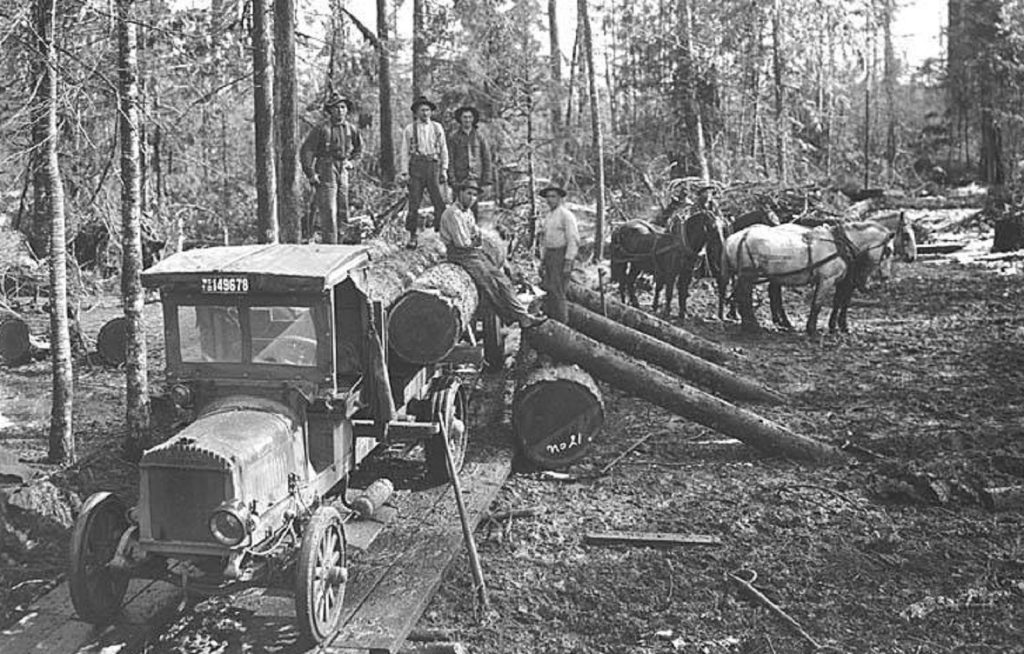
The Panic of 1893 Threatens to Topple the Timber Industry Down
Things were going great for the newfound logging towns of Lewis County until the Panic of 1893, a severe financial crisis that triggered a four-year depression in the United States. The crisis stopped all economic activity short, and Lewis County was no exception. Logging declined because of decreased demand nationally for lumber products.
Without logging camps to produce logs, the rest of the local economy also slowed. Before logging had been opening up new farmland for development as the trees were cut down and new open spaces were cleared. This, in turn, had previously brought in new settlers, but with the ongoing crisis, people were instead moving away in droves. This actually resulted in the town population of Centralia dropping to 1,200 when before it had reached nearly 5,000. In addition to logging, the sawmills and wood-products companies also slowed, seeing a decline in production. Sadly, no government assistance programs existed to help people through the hard times during this early period in the nation’s history.
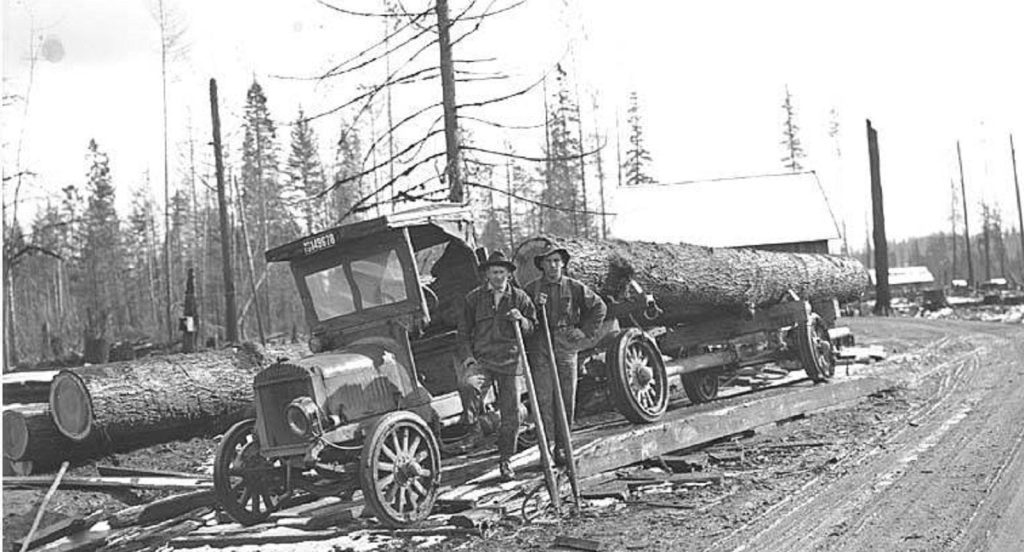
Lewis County’s Logging Industry in the Early 20th Century
By the turn of the Century, Centralia and Chehalis, along with other logging camps in the county, had finally found their feet again as the crisis came to an end. Centralia, in particular, had a fantastic boom as the town grew from 1,600 in 1900 to 7,311 in 1910. This was thanks to the railroad branch lines connecting the town to outlying areas. The railroad cars were filled with goods manufactured in Centralia focused around logging and timber. Centralia Shingle Mills produced 22 million shingles in 1898 alone. The nearby Wooden Eave Gutter Factory produced thousands of feet of gutters daily.
Other cities that were finally being connected by the railroad noticed a similar boom. The Northern Pacific Railroad had previously laid train tracks to Pe Ell in 1892. By the early 1900s, the town had grown into a bustling logging center boasting three sawmills, three shake mills, a broom handle factory, and a booming downtown. The Tacoma Eastern Railroad brought life to Morton, eventually becoming a logging boomtown in the 1930s.
Yet still, the region’s logging industry wasn’t out of the woods just yet, as it took another hit during the Great Depression. Cities like Chehalis saw declines in lumber and markets for agricultural products but largely managed to support themselves because of all the local agriculture. Centralia residents took it upon themselves to create their own relief fund to help community members. Here, several sawmills in town closed in 1929 and 1930 because of the slowdown of the timber industry. Over time, the abandoned mills burned down, and after the Depression was over, they never regained their presence in the town. Pe Ell was no exception as mills shut down, businesses closed, and many moved away.
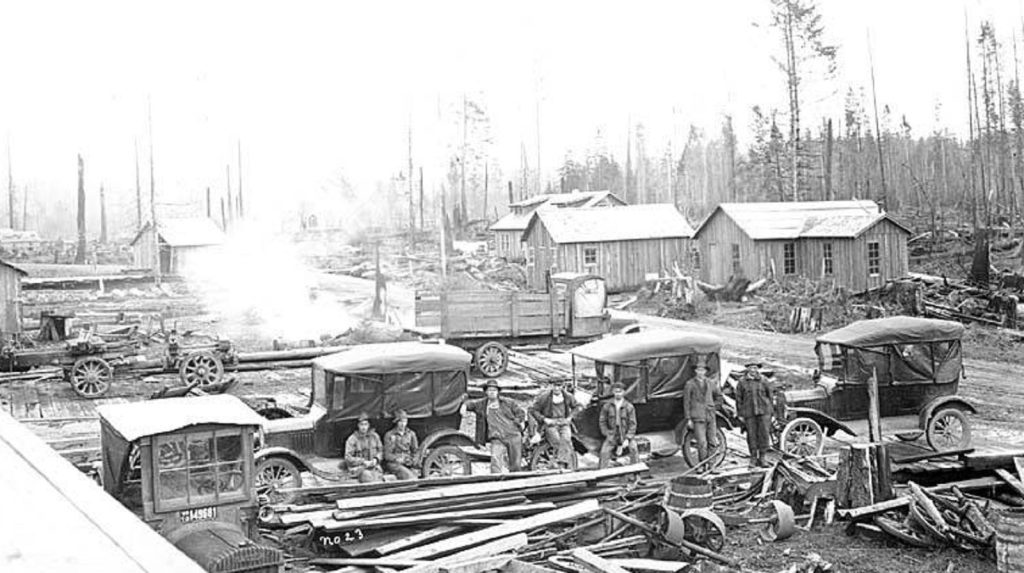
The Ups and Downs of Lewis County’s Timber Industry During the 20th Century
The region’s timber industry found its return to prosperity at the start of World War II as it brought an increased demand for wood and agricultural products. In fact, local loggers were not even drafted to join the fight as their work was essential to the war effort on its own.
The war’s end marketed a turning point in the economy and way of life for much of the region. Chehalis, most significantly, as their lumber on private lands was depleted and what timber was cut went more often to pulp and paper mills rather than local sawmills. These mills had employed thousands before they closed due to a decreased supply of timber and a shift in the size of the wood as many of the older, larger trees were now gone, and all that remained were younger, smaller ones.
Centralia remained a logging and mining town, but some new industries started up in the city as a means to other forms of income. For a while, the shift to federal lands opened new forests to cutting, but later, environmental concerns have restricted cutting on those lands as well. These concerns began to manifest in the mid-20th Century near the end of the war. Outcry over deforestation and its environmental impact was quickly sweeping across the nation.

Lewis County’s Timber Industry Finds New Roots in the 21st Century
The timber industry in Lewis County has weathered challenges and embraced change since this call to action, adapting to new realities while preserving its rich heritage. Today, sustainable forestry practices are at the forefront of the industry. Lewis County has played a pivotal role in the conservation movements, with efforts to balance industry needs with responsible stewardship of the forests.
Many of the region’s original “Timber Titans” are still in business due to this cooperation, including Weyerhaeuser, Sierra Pacific Industries, and Hampton Lumber, continuing to play a significant role in the local economy.
In addition, Lewis County pays homage to its timber heritage with annual logging festivals, including the granddaddy of all logging shows in Morton, the Morton Logger Jubilee.
From the echoes of pioneer axes to the hum of modern sawmills, Lewis County’s timber industry has left an enduring mark on the region’s history and identity. Today, as sustainable practices guide the way forward, the legacy of logging and timber in the region stands as a testament to the area’s resilience and its enduring connection to the forests that have defined its past and will continue to shape its future.









